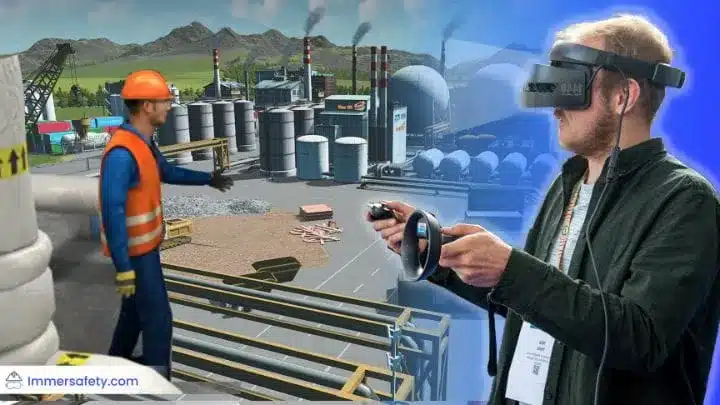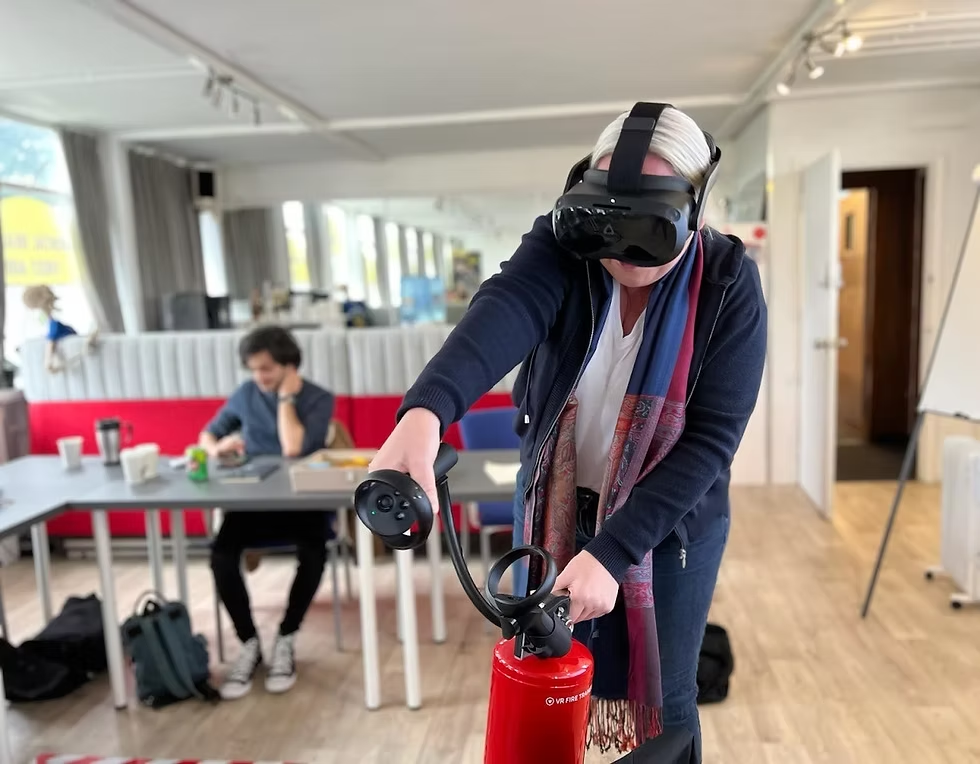The evolution of fire safety training has met its turning point with Virtual Reality because this technology now transforms fire emergency preparation for personnel and the general public. Traditional fire safety training methods deliver good results but do not offer simulated risk-taking since they lack actual hands-on experience. According to the National Fire Protection Association (NFPA) research reveals that U.S. firefighters reported more than 1.3 million fires throughout 2022 which caused 3,800 fatalities and caused $15.9 billion in property destruction. The introduction of VR fire training enables trainees to engage with realistic scenarios involving fire safety within virtual reality conditions.
The Importance of Fire Extinguisher Training in VR
Several thousands of fires break out annually at workplaces together with industrial buildings and homes leading to substantial property destruction and life-threatening conditions. The training individuals receive about proper fire extinguisher training use leads to smaller losses together with fewer casualties by helping them respond quickly and competently to emergencies.
The integration of virtual reality produces immersion in realistic fire conditions which gauges employees and firefighters as they determine their time responses and decision-making capabilities and firefighting methods in a safe environment free of actual flame risk.
10 Fire Scenarios That VR Training Can Simulate

1. Office Electrical Fire
Building failures from faulty wiring together with overloaded sockets and equipment malfunctions will start electrical fires. Training using virtual reality shows trainees how to recognize initial indicators such as light flickering as well as burning odors. VR simulations teach trainees proper methods to securely disconnect power supply and demonstrate how to properly use Class C fire extinguishers to extinguish fires before they spread.
2. Kitchen Grease Fire
Grease fires pose the highest danger level to both domestic and restaurant settings. VR training systems teach participants about grease fire behavior when water exposure leads to explosions as well as proper response techniques which include lid covering followed by fire blanket application or usage of Class K extinguisher. The training requires trainees to become familiar with high-risk locations for fire so they can establish appropriate prevention strategies.
3. Warehouse Chemical Fire
Industrial facilities keep dangerous substances which are prone to combustion readily available. Through VR training employees acquire knowledge about the initiation process of chemical fires along with MSDS decoding for fire suppression identification and foam and dry chemical extinguisher usage for stopping fire spread to volatile materials.
4. Car Engine Fire
Three main fire sources inside cars are fuel leaks combined with electrical failures and engine overheating. Through VR trainees go through a realistic training simulation which leads them to pull the vehicle over immediately then move passengers to safety while evaluating their ability to fight the fire. Trainees learn both the significance of fire extinguishers for their vehicles and proper emergency service telephony protocols.
5. High-Rise Building Fire
Fires that occur in skyscraper buildings create dangerous situations because of their elevated height combined with intricate escape route designs. The VR training technology creates a burning high-rise simulation which requires individuals to search for exit stairwells and stay near the floor to prevent smoke inhalation and help other people evacuate. Through the simulation students recognize vertical fire propagation mechanics as well as the necessity of fireproof doors and stairwells.
6. Hospital Fire Emergency
Evacuation activities at hospitals prove difficult since some patients require assistance to leave independently. The virtual reality training system equips healthcare personnel to deal with fire emergencies in intensive care units and operating rooms and patient wards. The medical staff receives training on how to operate oxygen shut-off valves to stop explosions while performing bedridden patient evacuations under the supervision of firefighters.
7. Aircraft Fire on the Tarmac
Effective response to aircraft fires demands fast decision-making together with accurate execution of security regulations. The application of virtual reality technology creates authentic training conditions for aviation professionals to deal with tarmac engine blazes together with onboard cabin fires. Flight and ground crew use training opportunities to practice using cabin fire extinguishers and lead passengers to emergency exits while creating a smooth coordination with airport fire teams to avoid fire spread.
8. Refinery and Oil Rig Fires
Refineries together with offshore oil rigs present the most dangerous fire risks based on their combination of inflammable fluids and gases. Virtual reality simulation systems let workers experience high-risk locations where they learn to detect preliminary gas leak indicators as well as execute emergency shutdown protocols. Refinery personnel discover the proper procedures for implementing specialized foam along with gas suppression systems for controlling major fires.
9. Forest Fire Outbreak
Wildfires spread with high speed at accelerating rates thus firefighting teams have limited time for containment. Virtual reality training provides firefighters with a virtual experience of forest fire management which requires them to gauge wind patterns while building containment barriers and effectively executing water or retardant deployment. Firefighters learn joint operations with both ground personnel and airborne firefighting teams for controlling fires.
10. Underground Tunnel Fire
Emergency responders confront exceptional challenges when battling fires in confined places such as subways and tunnels because of restricted ventilation areas. Training through virtual reality gives emergency responders skills to move through smoke-filled tunnels with self-contained breathing apparatus while finding the correct evacuation paths. By running simulations subway staff learns the skills needed to lead passenger evacuations while keeping the crowd calm.
Why VR Fire Training Is More Effective
The execution of conventional fire drills becomes challenging because they create significant disruptions while also being hard to undertake at regular intervals while also being costly. The virtual reality training solution delivers affordable access, endless retrainings and customizable programs to users. Research indicates virtual reality training enables passing rates of 75% for information retention beyond traditional educational techniques.
The safety aspect of virtual reality training results in no danger to performers because accidents are avoided during simulated practice. VR supplies immediate performance data so trainees can see their errors and learn how to correct them right before entering actual emergency situations.
The training scale-up potential of VR enables numerous staff members to learn simultaneously while eliminating the need for physical training spaces. Future advancements in VR technology will upgrade fire safety training methods that will benefit all people in their workspaces and residential environments.
Conclusion
The training scale-up potential of VR enables numerous staff members to learn simultaneously while eliminating the need for physical training spaces. Future advancements in VR technology will upgrade fire safety training methods that will benefit all people in their workspaces and residential environments. To learn more about VR Safety Trainings in Refineries, check out this blog: “VR Safety Trainings in Refineries: Helping Reduce Errors.”


